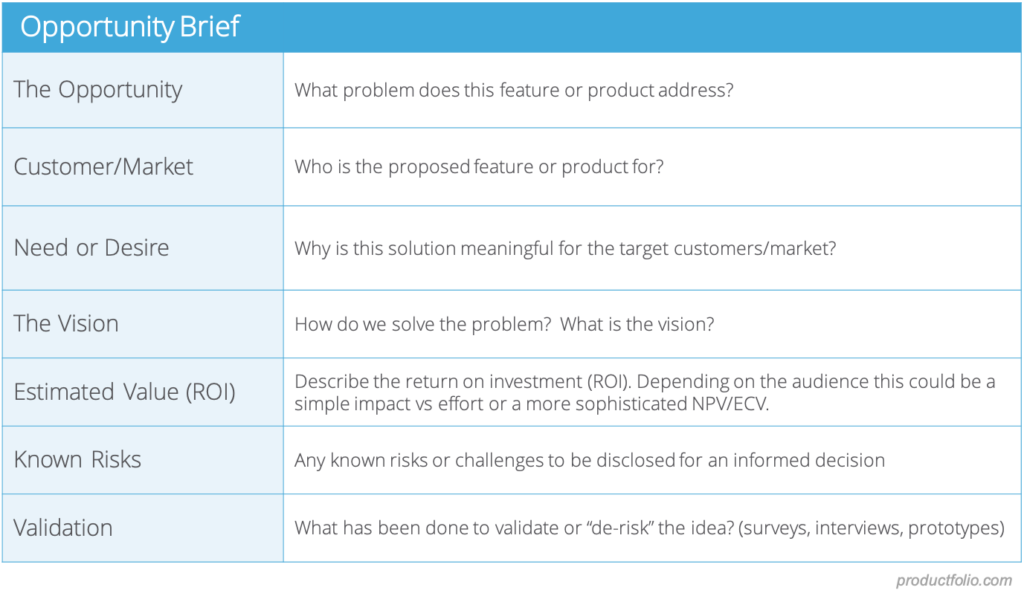Opportunity Brief Template
Ideas on what to do, to make your product better or to create something new can come from anywhere. However, not all ideas that are worth your money and time. You will need to convince those that provide the funds that an opportunity is truly worth pursuing. A convincing brief will be necessary to secure funding approval from company leadership. But what are those things to cover in a document that works? This is where you are going to find the Opportunity Brief Template helpful. It indicates the following as key elements of this document. There is a helpful brief example here from Neal Cabage.

Here are the key sections to include:
The Opportunity
Provide a brief discussion of the problem you have a chance to solve. What are the problems that you have observed and think your team would be able to solve for the customer? Focus entirely on describing the problem that you can solve for a group of users, and the potential benefit for the business, if you are successful.
The Vision
This should be a high-level summary of the 4Ws (what, why, when, who). After you’ve thought thought those pieces at some level of depth, the vision is a short 1-2 sentence description that puts it all together and provides the necessary direction for a team to execute on. A clear vision is critical for guiding everyone involved in building the product toward success.
Customer/Market
Identify who you are serving by solving this problem. Who are the people or groups that are confronted with the problem that you are trying to solve? It is not realistic and may prove an undoing to think that the solution you are proposing will appeal to everyone. Some groups of users will usually find it more beneficial. So it is crucial to identify those in the opportunity brief. If you have market segments or user personas defined, those can be great to reference here.
Need or Desire
Yes, you’ve identified the problem and the target market. But why do you think your solution will be meaningful for your customers? These people probably already have another way of dealing with a problem, even if less effectively so. What do you do or plan to do differently to make your product more appealing? This may be in terms of cost, quality, distribution channels, or other factors.
Estimated Value (ROI)
What is the return on investment (ROI) that you expect your proposed feature or product to generate, over some defined period of time? Of course, you don’t have to be accurate – you can’t. But there are methods and formulas that can be helpful in putting together something reasonable.
You most likely isolated the opportunity, compared other competing ones. The prioritization method that you used to do that may help in this regard. A simple Impact vs. Effort or Benefit vs. Cost model might suffice. For larger initiatives that require financial approval, teams may expect a more sophisticated analysis such as Net Present Value (NPV) or a variant known as the Expected Commercial Value (ECV).
Known Risks
Working on a new opportunity comes with its risks. Many product launches have failed because of inattention to such early on. You will need to show that you realize that you’re embarking on a somewhat risky endeavor. It is crucial to indicate in your product brief some risks that you have identified as having the potential to stand in the way of success. This foreknowledge helps to be better braced for such and make well-informed decisions.
Validation
Last but not least, you have to show what you have done to validate the opportunity or to reduce the risk of failure. Have you tested your hypotheses? Have you collected (and analyzed) user and/or expert feedback using tools such as surveys, interviews, and prototypes? Validation is necessary for ensuring that the solution to work on is one that customers would be ready to pay for.
The Opportunity Brief Template helps to keep things simple while addressing key points that matter more to company leadership.